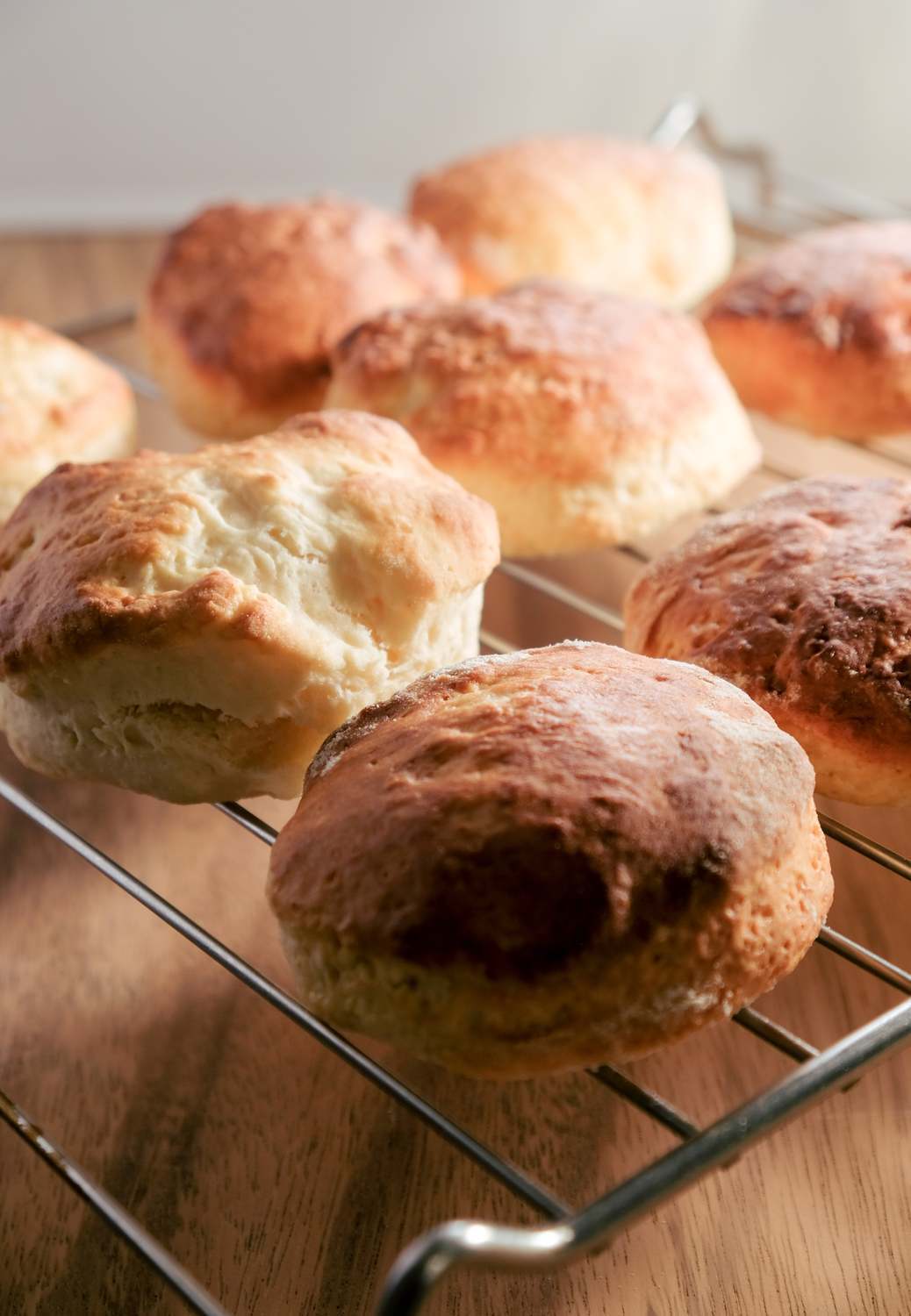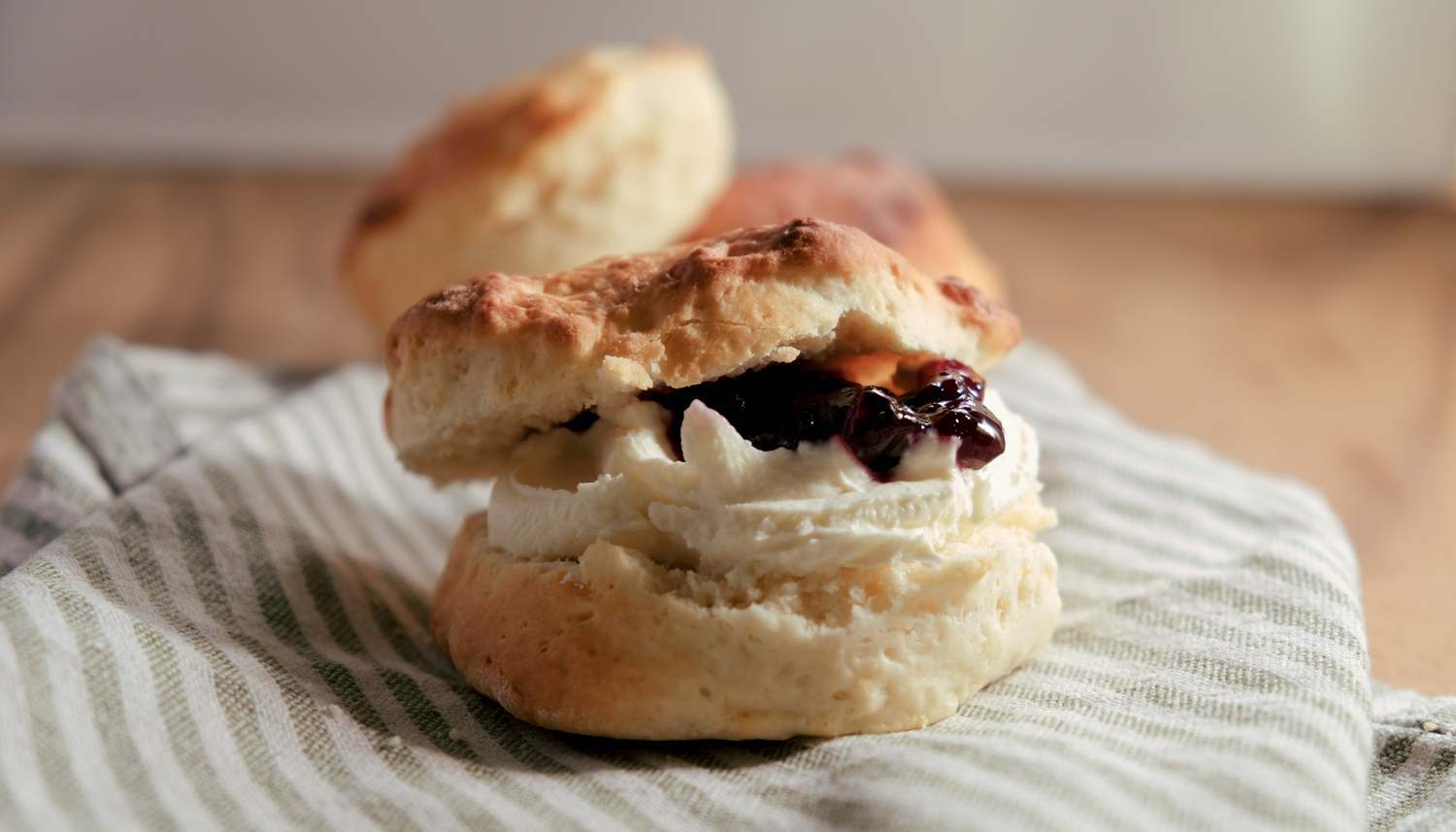
Buttermilk Scones Recipe

When I think of scones, I immediately think of English Afternoon Tea or High Tea. As these tasty pastry/bread-like treats are in my mind famous for being served during British afternoon tea. I however learned that scones did originate in Scotland.
Scottish quick bread seems to be the precursor of the scone. Scottish quick bread was often made with oats and baked on a griddle. The recipe probably evolved with time, as we nowadays commonly use flour, and bake the scones in an oven.
So where does the name scone come from? There actually are a couple of different origin stories. Some believe the name comes from Stone of Destiny, the place where the kings of Scotland used to be crowned. Others believe, funny enough, that the name comes from the Dutch word ‘Schoonbrot’. (beautiful bread). I had never heard of ‘Schoonbrot’ before, but it could be very old Dutch.
Jasper is crazy about scones, so I figured it was time to try and make them at home. They turned out a bit too small, but very tasty!
British Buttermilk Scones
- Preparation time: 20 min
- Bake time: 15 min
- Serves: 6 scones
Scones are actually not so difficult to make. I love that you only need about 30 minutes to both prepare and bake scones. Here I make basic scones, but there are endless variations possible. A great treat during Afternoon Tea or just as a snack!

Ingredients
- 225 grams flour
- 140 ml buttermilk
- 50 grams butter
- 45 grams sugar
- 2 teaspoons baking powder
- 1 tablespoon vanilla extract
- Pinch of salt
- Milk for wash
How to make British Buttermilk Scones?
- Preheat the oven at 220°C.
- Mix the flour, baking powder and salt.
- Cut the butter and add to the flour mixture.
- Mix until there are no more lumps of butter.
- Add the sugar.
- Mix the buttermilk and vanilla, and add to the flour mixture.
- Mix together, but make sure not to overmix the dough.
- Place dough on a floured surface. Softly press dough down with hands until ca. 4cm thick. Cut out rounds. (I use a 6 cm cutter, but if you don't have round cutters you can also use a glass/bowl to get the desired size scones).
- Place scones on a lined baking tray. Wash scones with Milk.
- Bake for 12-15 minutes.
- Serve scones with (clotted) cream and jam. Enjoy!


Tips & Trivia
- Ok, your scones will, of course, taste their absolute best when eaten fresh. It's a shame though, throwing away leftover scones. Luckily, scones freeze well. Freeze the scones in a container to keep their shape. When ready to eat the scones, bake the frozen scones for about 8 minutes and they will still be delicious!
- Are you not able to get clotted cream in your local store? It's also possible to make a nice clotted cream by mixing cream and mascarpone or by mixing crème fraîche and mascarpone. (Mix two parts Mascarpone with one part crème fraîche or two parts mascarpone with 1 part cream)
- High tea vs. Afternoon Tea. Internationally we mostly refer to ‘High Tea’ when we talk about the concept of 'Afternoon Tea'. High Tea and Afternoon Tea actually originated as something completely different in Britain. In early times, it was usual to only eat two meals a day; breakfast and dinner. Dinner was often eaten late, so Afternoon tea started as a bridge between these two meals.
- For Afternoon Tea people would sit down in comfortable chairs and enjoy a treat of tea. High Tea was often served at the table on high dinner chairs. Afternoon tea was mostly for the upper classes, while High Tea was more common for the working man. Workers didn’t have time to enjoy tea during the day, so tea was enjoyed after work. After a long day, workers got home starved. Tea was served with more heartier food, like pies, vegetables and bread. While Afternoon Tea was mostly a social event for the upper classes, the high tea started as a necessary meal for the working class
Welcome to Hops & Herbs
Here I share my love for travel, food, beer and DIY projects. It’s a collection of stories, ideas and recipes that I find inspiring, delicious and worth sharing.
